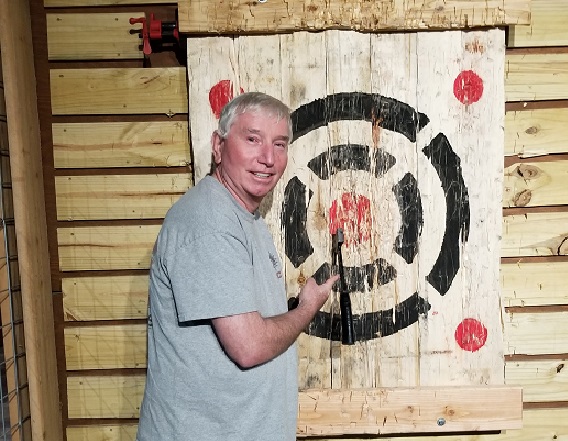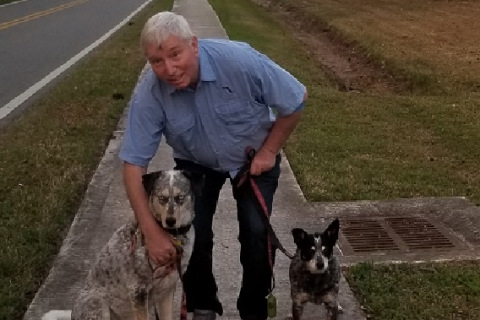Mesothelioma Survivor Describes His Success With Chemotherapy

Fact Checked | Written by: Travis Rodgers | Last Update: 10/24/2024 | 4 Min Read
Many mesothelioma patients receive chemotherapy treatments to destroy cancer cells. There are a number of side effects that are common while receiving chemo, some of which can be severe. But Kevin Hession says his treatments have gone very well for the past couple of years.
“Overall I’m extremely lucky or blessed or both that I still have all my hair,” Kevin told The Mesothelioma Center at Asbestos.com. “I’ve actually gained weight. I didn’t lose it; I gained it. When I was diagnosed, I was 210 lbs. I’m now right around 230 lbs.”
Kevin was diagnosed with pleural mesothelioma in August 2021. He underwent decortication surgery in January 2022 and has been receiving regular chemotherapy treatments ever since the procedure. He recently had his chemo infusion No. 38.
Coping Well With Chemotherapy
Nausea is one of the most commonly experienced side effects of chemo, but Kevin says he’s found a method that works for him to prevent it. “I’ve never been nauseous,” Kevin shares.
“I’ve never had a bad experience with chemotherapy. Part of that is I take a steroid that gives me 48 hours of protection from nausea and it works like a charm,” he explains. “My worst case on a scale of 1 to 10 has probably been a 3.”
In fact, Kevin’s mesothelioma treatments have gone so well he has the option to take what he calls a “chemo holiday.” His medical team recommends he continue his chemo treatments, but they’ve discussed the option to skip a round.
“My chemo has been pounding my mesothelioma to shreds,” Kevin says. “If I ever want a chemo holiday, I can take it, meaning I can skip a round.”
His imaging scans have shown the success of his chemotherapy. “I’ve had 8 CT scans in a row that show no evidence of disease,” Kevin added.
Supplemental Alternative Treatments
Some mesothelioma survivors choose complementary treatments to try to help manage disease symptoms and treatment side effects. However, some can negatively interact with medications and impact treatment outcomes.
These approaches should only be considered after talking to your medical team. Kevin emphasizes this point, saying, “Anyone who wants to go down this road must consult with their oncologist about it.”
Kevin feels his alternative therapies used in conjunction with his traditional treatments have been beneficial. “Has it helped? I don’t know,” he says. “But I’m still doing well 2 years after my major decortication surgery.”
He’s been receiving cupping treatments, or fire cupping. Cups are heated and applied to the skin. There have been cases of accidental burns, but generally the process is considered safe.
Research demonstrating its effectiveness is lacking. A recent meta-analysis investigating the possible relationship between cupping and pain reduction, found, “The available evidence of very low-to-moderate quality suggests that cupping therapy is effective in managing chronic pain, knee osteoarthritis, low back pain, neck pain and chronic back pain.”
Kevin told us his cupping treatments don’t “really feel like hot cups being placed on my back” but the feeling can be uncomfortable. “The cups create a suction on your back,” he explains. “It might be a little painful, but it’s not much. It’s said it helps remove toxins from the body among other things.”
Acupuncture is another ancient alternative treatment Kevin has tried. As with other alternative therapies, research into its efficacy is ongoing.
“I’ve talked to my oncologist about acupuncture,” Kevin says. “I usually go once a week. They do the little sticking the pins in me and so forth. Early on you can see a lot of pronounced bruises, but now there are hardly any bruises from the experience.”





